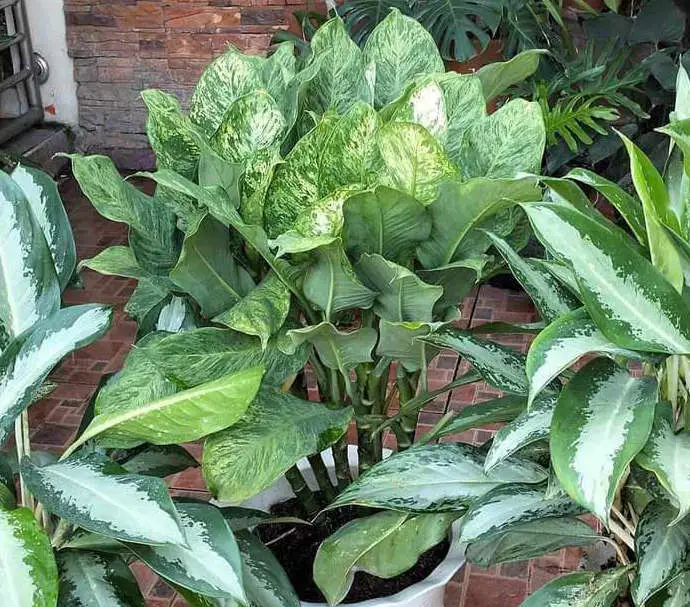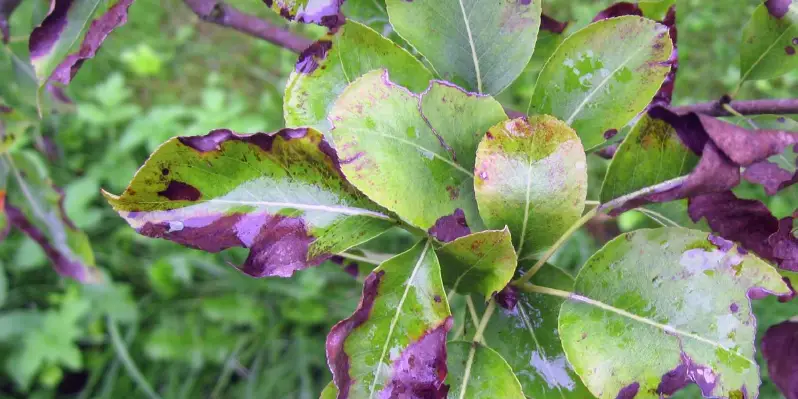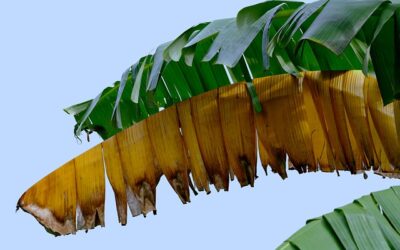If you’ve been keeping an eye on your rhododendron plants, you may have noticed that their leaves are starting to turn brown. This can be a cause for concern, but don’t worry – it’s not always a sign of trouble. In this blog post, we’ll talk about the possible causes of brown leaves on rhododendrons, and we’ll provide some tips on how to deal with them.
Why Are My Rhododendron Leaves Turning Brown?
Brown rhododendron leaves are frequently caused by fungal infections, pests, overwatering, leaf burn, and nutritional deficiencies. Each problem might result in a distinct type of brown discoloration on the leaves.
It’s critical to figure out what caused the issue so that you can take the appropriate measures to fix it. I’ll go through each of the causes in more depth now.
Browning Rhododendron Leaves from Fungal Infection
Fungal infections are a common cause of brown leaves on rhododendrons. The most common type of fungus is Phytophthora, which results in dark brown or black spots on the leaves.
This fungus typically occurs when there is too much moisture on the leaves – for example if you water your plants in the evening and the leaves don’t have a chance to dry off before nightfall.
It can also happen when fungal spores are present in the soil, and they come into contact with the leaves when you water your plants.
If you think that your rhododendron’s brown leaves are caused by a fungal infection, you should take measures to improve air circulation around the plant and make sure that the leaves are dry before nightfall.
Applying a fungicide is needed to stop the spread of the fungus and protect other plants. I recommend using neem oil (Amazon link), which is a natural, biodegradable alternative to chemical fungicides.
Simply add a few drops of neem oil to your watering can or spray bottle and apply it to the leaves of your plants, making sure to coat the undersides of the leaves where pests are most likely to hide. For best results, apply the solution every 7-14 days.
Browning Rhododendron Leaves from Too Much Water
Overwatering is another common cause of brown leaves on rhododendrons. We tend to think that more water is a good thing, but too much water can actually drown the roots of your plants and cause the leaves to turn brown.
If you think that your rhododendron’s brown leaves are caused by overwatering, you should check the soil to see if it is moist before watering your plant. Stick your finger in the soil – if it feels wet, then wait a few days before watering again.
It’s also a good idea to invest in a moisture meter, which will help you to keep track of the moisture levels in your soil and avoid overwatering your plants.
To save a plant that has been overwatered, you will need to act quickly. Remove the plant from its pot and check the roots. If they are mushy or have started to rot, then you will need to trim them back until you only have healthy roots left.
Once you have trimmed the roots, replant the rhododendron in well-draining soil, and make sure that you don’t water it again until the soil has had a chance to dry out completely.
Browning Rhododendron Leaves from Pests
Pests love eating rhododendron leaves, and they can cause the leaves to turn brown in a matter of days. The most common pests are aphids, scale insects, and mites.
Aphids are small, green insects that congregate on the undersides of rhododendron leaves. They suck the sap out of the plant, which can cause the leaves to turn brown and eventually drop off.
Scale insects are small, hard-bodied pests that attach themselves to the stems and leaves of rhododendrons. They feed on the sap of the plant, which can cause the leaves to turn yellow or brown.
Mites are tiny spider-like creatures that live in the soil and on the undersides of rhododendron leaves. They feed on the cells of the plant, which can cause the leaves to turn brown and eventually drop off.
If you think that your rhododendron’s brown leaves are caused by pests, you should inspect the undersides of the leaves for signs of aphids, scale insects, or mites.
The best way to tackle pests is through the use of neem oil (Amazon link), which will get rid of any pests that are present on your plants.
Simply add a few drops of neem oil to your watering can or spray bottle and apply it to the leaves of your plants, making sure to coat the undersides of the leaves where pests are most likely to hide. For best results, apply the solution every seven days
Browning Rhododendron Leaves from Leaf Burn
Too much sun will cause the leaves of your rhododendron to turn brown. This is especially a problem in the summer months when the sun is at its strongest.
If you think that your rhododendron’s brown leaves are caused by leaf burn, you should move your plant to a shady spot and make sure that it doesn’t get too much sun.
You can also try to protect your plant from the sun by covering it with a light cloth or placing it in a spot where it will get some afternoon shade.
Browning Rhododendron Leaves from Nutrient Deficiencies
Nutrient deficiencies are another common cause of brown leaves on rhododendrons. The most common nutrient deficiency is iron, but nitrogen and magnesium deficiencies can also cause browning leaves.
If you think that your rhododendron’s brown leaves are caused by a nutrient deficiency, you should fertilize your plant with an all-purpose fertilizer that contains iron. You can also try adding some compost to the soil to help improve its nutrient content.
Once you have corrected the nutrient deficiency, you should see a difference in the color of your rhododendron’s leaves within a few weeks.
Browning Rhododendron Leaves FAQs
This plant isn’t easy to grow, so I will now answer a few more questions you may have:
Will brown rhododendron leaves turn green again?
If the leaves are only slightly brown, then they may turn green again if the cause of the problem is corrected. However, if the leaves are severely brown or black, then they will not turn green again.
Should I remove brown leaves from my rhododendron?
If the cause of the browning is due to pests or fungal diseases, then you should remove the affected leaves to prevent the problem from spreading.
Pruning also allows the plant to focus its energy on new growth. Just make sure to use sterilized pruning shears to avoid infecting your plant with diseases.
The best time to prune your rhododendron is in the late summer or early fall. This will give the plant time to recover from the pruning before winter sets in.
Conclusion
In conclusion, there are several reasons why your rhododendron’s leaves may be turning brown. The most common causes are pests, nutrient deficiencies, fungal disease, nutritional deficiency, and too much sun.
I hope the lessons in this article have taught you how to identify the problem and take steps to correct it. With a little care and attention, your rhododendron will be back to its former glory in no time! Thanks for reading!
Tim is an avid gardener from the UK. He was the founder of PlantCarer.com from 2021 to Sep 2023. He sold PlantCarer.com to Aaron. He has since started his own business called Seed To Supper, which provides new gardeners all the materials you need in a box (pots, seeds, compost and instructions) to grow your own delicious and nutritious vegetables and herbs from start to finish – no garden required.








Hello,
I just transferred my rhododendron from container to ground 5 days ago and a section of the plant has browning leaves. it has been in the pot for several months and has looked good, so I know this due to the recent planting. I did put some fertilizer that’s made for rhododendrons in the hole before planting. What are your thoughts on what I should do?
Thanks for your help, Doug
It’s not uncommon for plants to undergo a period of adjustment when they are transplanted from containers to the ground.
Browning leaves on a newly transplanted rhododendron sounds like it could be a sign of transplant shock, especially if the plant was healthy prior to transplantation.
While you mentioned that you added fertilizer to the planting hole before transplanting, be cautious with fertilization immediately after transplantation. Fertilizing too soon can further stress the plant.
It’s generally recommended to wait until the plant has settled in and started to show signs of new growth before applying fertilizer.
Also keep in mind that granular fertilizer you put in the hole away from the roots won’t be available to the plant immediately.